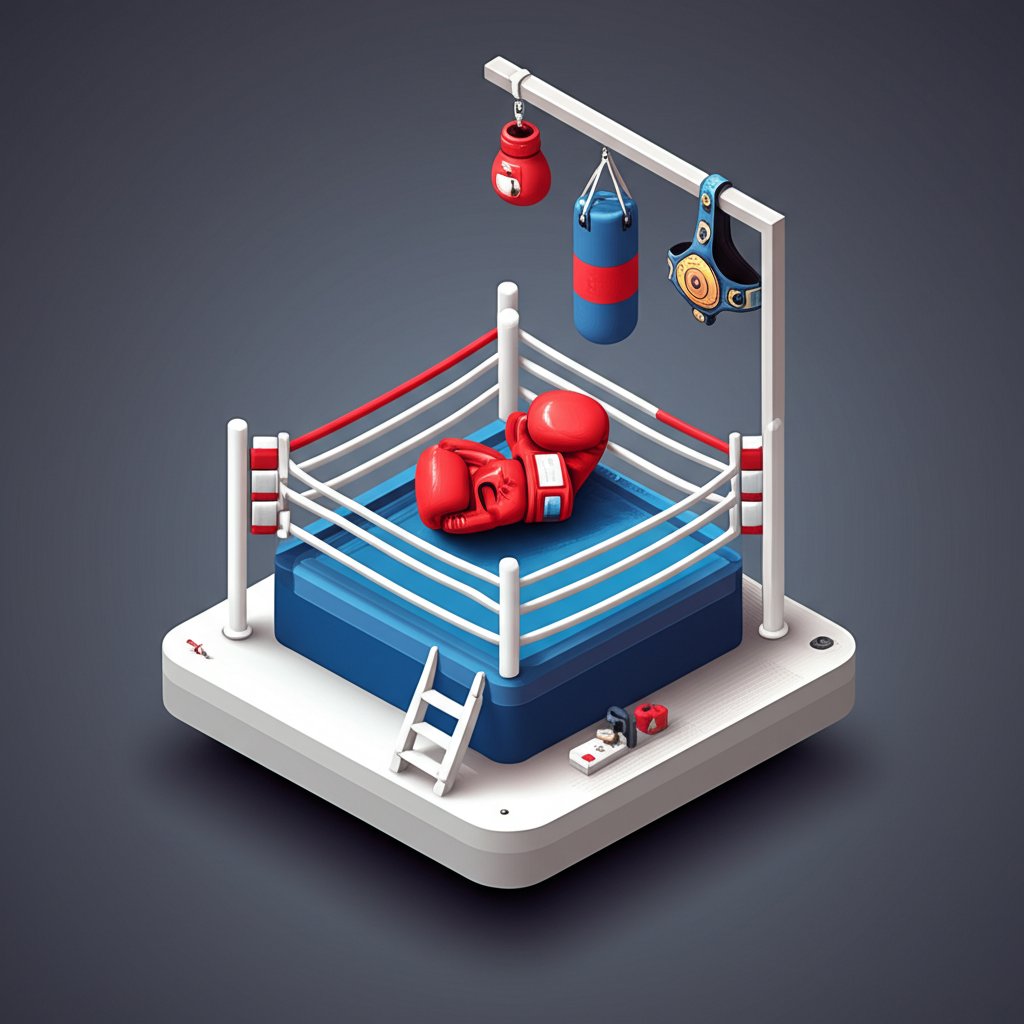Step into the electrifying world of the squared circle – the boxing ring. Beyond the thunderous knockouts and dazzling footwork lies a rich tapestry of tradition, grit, and fascinating lore. While many are captivated by the raw spectacle, few truly understand the profound depths of its history, the intricate rules that govern it, and the captivating “ring secrets” that define this premier combat sport.
Prepare to be enthralled as we dive deep into the intriguing realm of boxing facts, unearthing hidden stories, legendary rivalries, and awe-inspiring techniques. From its brutal ancient origins to the refined “sweet science” we know today, this article will equip you with a comprehensive understanding that will leave you awestruck and ready to dominate any discussion about this noble sport. Get ready to discover the unparalleled legacy and surprising insights that make boxing an unmatched phenomenon.
The Deep Roots of Boxing: From Ancient Brawls to Organized Combat Sports
The story of boxing isn’t merely centuries old; it stretches back millennia, predating many organized combat sports we recognize today. Its journey from primal brawling to a regulated discipline is a testament to humanity’s enduring fascination with competitive striking.
Prehistoric Origins: Evidence from Millennia Ago
Long before the modern ring, humans engaged in some form of fisticuffs. The earliest known depictions of fist-fighting date back to Sumerian carvings from around 3000 BCE in Mesopotamia. Further evidence appears in ancient Egyptian reliefs from approximately 2000 BCE, showing two men with bound hands, ready to strike. These early contests were often bare-knuckle and likely lacked formal rules, serving as tests of strength and courage or perhaps ritualistic combat.
Ancient Greece and the First Olympic Boxing
The definitive marker in the early history of boxing arrives with the ancient Greeks. Boxing (known as pygmachia) made its debut as an Olympic sport in 688 BC during the 23rd Olympiad. This was a brutal affair, far removed from modern standards:
- No Rounds: Fights continued until one participant was knocked out or conceded defeat by raising a finger.
- Protection: Boxers wrapped their hands with himantes – long strips of oxhide – which offered minimal protection but added impact. Later, the even more devastating caestus, fortified with metal or spikes, was used, leading to severe injuries.
- Target Areas: There were no rules against hitting a downed opponent, and blows to any part of the head were permitted.
- Focus: The sport emphasized endurance and raw power over technique.
Roman Empire and the Gladiator Arena
The Romans adopted Greek pugilistic practices, integrating pugilatus into their gladiator games. While the Greeks viewed boxing as a noble athletic pursuit, the Romans often transformed it into a brutal spectacle. The caestus became more weaponized, featuring sharp metal studs or blades, and contests frequently ended in death, solidifying its place as one of the most violent combat sports of its era. This shift marked a period of extreme brutality, pushing the sport toward the fringes of acceptable public display.
The Evolution of the Sweet Science: How Modern Boxing Took Shape
The decline of the Roman Empire saw the sport mostly disappear from public life for centuries. It re-emerged in a different form, laying the groundwork for the modern iteration of boxing that captivated the world.
Bare-Knuckle Prizefighting in England (16th-18th Century)
The form of boxing that most directly influenced its modern form began to flourish in England in the 16th and 18th centuries. This era saw the rise of “prize-fighting,” where champions fought for money, prestige, and the adoration of growing audiences.
- James Figg (1719): Often regarded as the first “champion” of England, Figg was a master of various combat sports, including fencing, cudgeling, and bare-knuckle fighting, operating his own academy in London.
- Jack Broughton (1743): Figg’s student, Broughton, is credited with establishing the first set of unified rules for the sport, often referred to as “Broughton’s Rules.” These rules introduced concepts like a “throw” (a boxer hitting the ground signaled the end of a round, with a 30-second recovery) and prohibited hitting a downed opponent. While still bare-knuckle and brutal, they were a crucial step towards standardizing and humanizing the sport. He also recommended softer “mufflers” (early padded gloves) for sparring, a precursor to their mandatory use.
The Revolutionary Marquess of Queensberry Rules (1867)
Perhaps the single most pivotal moment in the history of boxing came with the introduction of the Marquess of Queensberry Rules. Drafted by John Graham Chambers and endorsed by John Sholto Douglas, the 9th Marquess of Queensberry, these rules were designed to make boxing safer and more sport-like. They revolutionized the sport, making it recognizable to modern observers and are among the most crucial facts about boxing:
- Mandatory Padded Gloves: This was the most significant change, drastically reducing severe hand injuries and concussion severity compared to bare-knuckle fighting.
- 3-Minute Rounds: Introduced fixed round durations with one-minute rests, fundamentally changing pacing and strategy.
- 10-Count Knockout: A fighter knocked down has 10 seconds to rise and continue. If unable, it’s a knockout.
- No Wrestling or Holding: Clinching was still allowed, but prolonged holding or wrestling was prohibited, emphasizing pure striking.
- Designated Ring Size: Specified a ring between 16 and 24 feet square.
These rules quickly gained international acceptance, transforming boxing from a controversial sport into a globally regulated and respected athletic contest.
The Rise in America and Professional Boxing
As the Queensberry Rules took hold, boxing saw immense growth in the United States during the late 19th and early 20th centuries. It transitioned from an often-illegal underground activity to a legitimate and highly popular professional sport.
- John L. Sullivan: Known as “The Boston Strong Boy,” Sullivan was the last bare-knuckle champion. He is also recognized as the first gloved heavyweight champion of the world, defeating Jake Kilrain in 1889 under modified Queensberry Rules. His career perfectly bridges the gap between the old and new eras.
- Weight Divisions: The formalization of weight divisions allowed smaller, equally skilled fighters to compete fairly, expanding the sport’s appeal and talent pool.
- Mainstream Appeal: Iconic figures and thrilling contests propelled boxing into mainstream consciousness, turning pugilists into national heroes.
Inside the Ropes: Unpacking the Boxing Ring and Its Unwritten Rules
The boxing ring is more than just a stage; it’s a meticulously designed battlefield where strategy and physique collide. Understanding its elements and the gear involved reveals deeper boxing facts about safety and performance.
The “Squared Circle”: Dimensions and Design
The phrase “squared circle” is one of the more common facts about boxing, referring to the paradox of a square ring with ropes that appear circular from a distance.
- Standard Size: Professional boxing rings typically measure between 16 and 24 feet square within the ropes. The platform itself extends beyond the ropes, providing a safety margin.
- The Ropes: Usually three or four strands, the ropes define the fighting area and prevent fighters from falling out. They are tightly strung and act as a rebound surface for offense and defense.
- The Canvas: The padded floor, covered by canvas, provides a safe, non-slip surface for movement and falls.
- Turnbuckles: Padded cushions around the posts that secure the ropes. These are often used by fighters to push off or trap opponents.
The confined space of the ring forces confrontation, limiting escape and making engagement inevitable, adding to the intensity of this combat sport.
Essential Gear: Gloves, Wraps, and Mouthguards
Modern boxing gear is designed for both fighter safety and competitive fairness, a significant evolution from its ancient predecessors.
- Boxing Gloves:
- Weight: Measured in ounces (oz). Professional fight gloves typically range from 8-10 oz for lighter divisions and 10-12 oz for heavier ones. Amateur gloves are usually heavier (10-12 oz) for increased protection.
- Purpose: Primarily to protect the hands of the puncher and reduce the risk of cuts and severe impact trauma to the opponent, allowing for longer, more competitive bouts. They don’t prevent concussions but distribute impact.
- Hand Wraps: Made of cotton or gauze, these are meticulously wrapped around a boxer’s hands and wrists before the gloves. Their purpose is to support the bones and tendons in the hand, preventing fractures and sprains, not to add punching power.
- Mouthguards: Essential for protecting teeth, gums, and jaws, and reducing the risk of concussions by absorbing some impact.
- Headgear (Amateur Boxing): While professional boxers do not wear headgear in competition, amateur boxers (including Olympians until 2016 for men) use it to reduce cuts, bruises, and superficial injuries, though its effectiveness in preventing concussions is debated.
The Art of Judging: Beyond the Knockout
While a knockout is the most definitive victory, most boxing matches are decided by judges’ scorecards, revealing the technical intricacies of the sport.
- 10-Point Must System: This is the standard scoring method. The winner of each round receives 10 points, and the loser receives 9 (or fewer if there’s a knockdown or point deduction).
- Judging Criteria: Judges evaluate several factors, often prioritized as:
- Effective Aggression: Landing punches while moving forward purposefully.
- Ring Generalship: Controlling the pace and position in the ring.
- Defense: Avoiding punches.
- Hard and Clean Punches: Not just volume, but impactful, well-aimed shots.
- Role of the Referee: The referee enforces the rules, separates fighters from clinches, handles knockdowns, and can stop a fight if a boxer is deemed unable to continue (Technical Knockout or TKO).
Legendary Figures and Iconic Moments: Shaping Boxing’s Global Legacy
The tapestry of boxing facts is woven with the threads of extraordinary athletes whose prowess and personalities transcended the sport.

The Greatest: Muhammad Ali’s Impact
No discussion of boxing is complete without acknowledging Muhammad Ali (born Cassius Clay). His impact, both inside and outside the ring, is unparalleled.
- Unmatched Skill: Ali possessed incredible speed, footwork, and charisma for a heavyweight. His “float like a butterfly, sting like a bee” style set him apart.
- Cultural Icon: Beyond his boxing ability, Ali was a leading figure in the Civil Rights movement, an advocate for peace, and a master of self-promotion. His refusal to be inducted into the U.S. Army on religious grounds made him a contentious yet iconic figure.
- Legendary Fights: The “Rumble in the Jungle” against George Foreman (1974) and the “Thrilla in Manila” against Joe Frazier (1975) are considered among the greatest combat sports contests of all time.
Other Titans: From Joe Louis to Mike Tyson
Numerous other fighters have indelibly stamped their mark on the history of boxing:
- Joe Louis (“The Brown Bomber”): Held the heavyweight title for a record 11 years, 8 months, and 8 days (1937-1949). His victory over German Max Schmeling in 1938 was a powerful symbol against Nazi ideology during WWII.
- Rocky Marciano: The only undefeated heavyweight champion (49-0), known for his relentless aggression and iron chin.
- Sugar Ray Robinson: Widely considered the greatest pound-for-pound boxer of all time, reigning supreme in the welterweight and middleweight divisions.
- Modern Masters: From the technical brilliance of Floyd Mayweather Jr. to the destructive power of Mike Tyson, and the multi-division success of Manny Pacquiao, these athletes continue to push the boundaries of skill and athleticism.
Boxing in the Olympics: Amateur Excellence
While ancient boxing was an Olympic sport, modern boxing was reintroduced to the Olympic Games in 1904. It remains a crucial platform for amateur athletes and a stepping stone to professional careers.
- Amateur vs. Professional: Olympic boxing differs with shorter rounds, mandatory headgear (until 2016 for men), and different scoring systems (though now closer to pro).
- Talent Showcase: Many professional legends, including Muhammad Ali, Joe Frazier, George Foreman, Lennox Lewis, Oscar De La Hoya, and Vasyl Lomachenko, began their journeys by winning Olympic medals.
- Global Reach: The Olympics bring boxing to a global audience, fostering national pride and showcasing the diversity of talent from all continents. Women’s boxing became an official Olympic sport in 2012, further expanding its reach.
Beyond the Knockout: Unique Boxing Facts and Their Surprising Origins
The world of boxing is full of terminology and traditions that make it uniquely captivating. Delving into some lesser-known boxing facts reveals amusing and insightful origins.
The Origin of “Pugilist” and “The Sweet Science”
- Pugilist: The term “pugilist” for a boxer derives from the Latin word pugil, meaning “fist fighter.” This ancient root links modern boxers directly back to their Roman and Greek predecessors.
- The Sweet Science: This poetic moniker was coined in the early 19th century by British sportswriter Pierce Egan. He used it to describe the strategic, technical, and intellectual aspects of boxing, emphasizing that it was more than just brute force – it required skill, timing, footwork, and mental acuity. This phrase beautifully captures the essence of boxing as an art form within combat sports.
Longest Fight in History
While modern fights are limited to 12 rounds, the early bare-knuckle era produced incredibly lengthy bouts, one of the most astonishing facts about boxing:
- Bare-Knuckle Record: The longest recorded bare-knuckle fight under Broughton’s Rules took place in 1743 between Jack Broughton and George Stevenson, lasting an astounding 3 hours and 15 minutes.
- Gloved Era Record: Even in the gloved era, before modern round limits, fights could be marathon events. In 1893, Andy Bowen and Jack Burke fought for 7 hours and 19 minutes, an incredible 110 rounds, ending in a no-contest due to sheer exhaustion.
The “Southpaw” Phenomenon
- Definition: A “southpaw” is a left-handed boxer who typically fights with their right foot forward, leading with their right jab and delivering power with their left cross.
- Origin: The term is believed to have originated in baseball, where pitchers who threw with their left hand often faced west, meaning their pitching arm was on the south side of their body relative to home plate. The term transferred to boxing due to its unique stance and the inherent advantage it can create against orthodox (right-handed) fighters who are less accustomed to the angles and timing of a left-handed lead.
Women in Boxing: A Hard-Fought Rise
The history of boxing has predominantly been male-dominated, but women have consistently fought for their place in the ring.
- Early Exhibitions: Women held exhibition matches as early as the 18th century in England, though often viewed as novelties.
- Bans and Struggles: For much of the 20th century, formal women’s boxing was banned or heavily restricted in many places due to societal norms and perceived dangers.
- Modern Recognition: The late 20th and early 21st centuries saw a resurgence and fight for acceptance. Laila Ali (daughter of Muhammad Ali), Lucia Rijker, and Katie Taylor are just a few of the pioneers who paved the way.
- Olympic Inclusion: A landmark moment occurred in 2012 when women’s boxing was finally included as an official Olympic sport, cementing its legitimacy on the global stage for this combat sport.
Boxing’s Broader Impact: Health, Discipline, and Cultural Significance
Beyond the competition, the influence of boxing extends into personal development, fitness, and popular culture, offering surprising facts about boxing’s enduring legacy.
Physical and Mental Benefits of Boxing Training
You don’t have to step into a professional fight to reap the rewards of boxing training. It’s renowned as one of the most comprehensive workouts across all combat sports.

- Full-Body Workout: Boxing engages every major muscle group. It combines explosive movements (punches), sustained effort (footwork), and core strength (rotational power).
- Cardiovascular Endurance: The intense, interval-based nature of boxing training significantly boosts cardiovascular health and stamina.
- Coordination and Agility: Rapid footwork, head movement, and hand-eye coordination drills sharpen reflexes and improve overall athleticism.
- Mental Discipline: Learning combinations, adapting to opponents, and staying calm under pressure fosters incredible mental fortitude, focus, and strategic thinking.
- Stress Relief: Hitting a bag or pads can be an incredibly effective way to release stress and aggression in a controlled environment.
- Confidence: Mastering new skills and pushing physical limits builds immense self-confidence and self-efficacy.
Boxing in Pop Culture: Films, Literature, and Art
The raw drama, personal stakes, and narrative potential of boxing have made it a perennial favorite in storytelling.
- Iconic Films: Movies like Rocky, Raging Bull, Million Dollar Baby, and Creed have become cultural touchstones, exploring themes of perseverance, redemption, sacrifice, and the underdog spirit.
- Literary Themes: Authors have long used boxing as a metaphor for life’s struggles, with characters facing internal and external battles in and out of the ring.
- Artistic Expression: From iconic photographs to paintings and sculptures, artists have captured the physical beauty, emotional intensity, and brutal elegance of boxers for centuries.
Boxing as a Premier Combat Sport
In a landscape filled with diverse martial arts and combat sports, boxing holds a unique and respected position.
- Specialized Striking: Unlike mixed martial arts (MMA) which combines various disciplines, boxing focuses purely on striking with the hands, leading to an incredibly refined and specialized skill set.
- Art of Distance and Timing: Boxers are masters of controlling distance, feinting, counter-punching, and exploiting openings with precision and timing.
- Footwork and Head Movement: Elite boxers display unparalleled footwork for positioning and masterful head movement for defense, making them incredibly difficult to hit.
- Historical Depth: Its deep roots and continuous evolution give it a gravitas that few other combat sports can match.
Conclusion
From the brutal bare-knuckle duels of ancient Greece to the global spectacle of modern championship fights, the history of boxing is a captivating journey of human endurance, skill, and transformation. We’ve unearthed countless boxing facts, explored the revolutionary Marquess of Queensberry Rules, delved into the significance of the “squared circle,” and celebrated the legends whose lives became indelible facts about boxing itself.
Far more than just a clash of fists, boxing stands as a profound testament to the human spirit – a “sweet science” that demands not only physical prowess but also strategic brilliance, unwavering discipline, and immense courage. It continues to be a raw and compelling force among combat sports, constantly evolving yet forever rooted in its incredible past. Whether you’re a seasoned enthusiast or a curious newcomer, we hope these insights have deepened your appreciation for the amazing world of boxing. Step into its ongoing narrative and prepare to be forever inspired.
FAQ
Q: When did boxing become an Olympic sport?
A: Boxing first appeared as an Olympic sport in ancient Greece in 688 BC. Modern boxing was reintroduced to the Olympic Games in 1904.
Q: What are the Marquess of Queensberry Rules?
A: The Marquess of Queensberry Rules, drafted in 1867, were a revolutionary set of regulations that standardized modern boxing. Key rules include mandatory padded gloves, 3-minute rounds, a 10-count for knockouts, and prohibitions against wrestling or hitting a downed opponent.
Q: What is the origin of the term “The Sweet Science”?
A: The term “The Sweet Science” was coined by British sportswriter Pierce Egan in the early 19th century. It highlights the strategic, technical, and intellectual depth of boxing, emphasizing that it requires skill, timing, and mental acuity, not just brute force.
Q: How long was the longest boxing match in history?
A: The longest recorded bare-knuckle fight lasted 3 hours and 15 minutes between Jack Broughton and George Stevenson in 1743. In the gloved era, an astonishing 110-round fight between Andy Bowen and Jack Burke lasted 7 hours and 19 minutes in 1893, ending in a no-contest.
Q: What makes boxing different from other combat sports like MMA?
A: Boxing is a pure striking combat sport that exclusively uses punches, focusing on highly specialized hand-to-hand combat, footwork, and head movement. Unlike MMA (Mixed Martial Arts), it does not allow kicks, knees, elbows, grappling, or ground fighting, leading to a unique set of skills and strategies.
Q: Who was the first heavyweight boxing champion under modern rules?
A: John L. Sullivan is widely recognized as the first gloved heavyweight champion of the world, winning his title in 1892 under modified Marquess of Queensberry Rules.
Q: Are women allowed to box in the Olympics?
A: Yes, women’s boxing became an official Olympic sport at the 2012 Summer Olympics in London.










